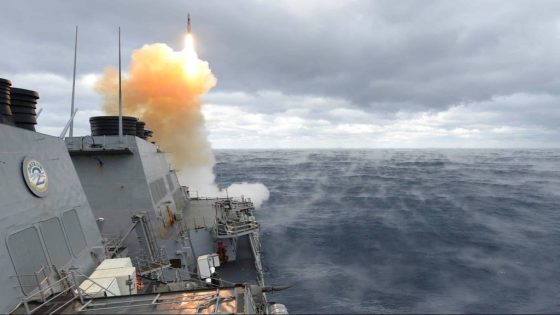The Navy awarded propulsion company Ursa Major a contract to prototype and test a solid rocket-motor for the serviceâs Standard Missile program.
Under the deal â part of the Naval Energetics Systems and Technologies program â the Denver-based firm will develop a new design for the Navyâs Mk 104 rocket motor and use its tailored additive manufacturing approach to build a prototype.
The Mk 104 supports the Navyâs line of Standard Missiles, which provide a range of surface-to-air defense, ballistic missile defense, and anti-air, land and sea capabilities. Notably, the SM-6 can intercept hypersonic weapons, which fly and maneuver at or above Mach 5 speeds.
âWhile the Mk 104 is a high-performance motor, legacy models are challenging to manufacture,â Ursa Major said in an April 8 statement. âUsing the companyâs cutting-edge Lynx production process for SRMs, Ursa Major will leverage additive manufacturing to design a high-performing motor built for manufacturability and reliability.â
The company declined to provide the exact value of the contract, but told C4ISRNET it is worth âsingle digit millions.â
Ursa Major unveiled its Lynx additive manufacturing approach last November. The process uses tools like 3D printing to quickly build solid rocket motor cases as well as subcomponents for other systems.
Solid rocket motors, or SRMs, are in high demand, but production is limited to a handful of suppliers. Ursa Major wants to help revive that industrial base through its streamlined, rapid production process.
CEO Joe Laurienti told reporters during a briefing last month the companyâs production line is âvery active,â adding that it builds at least one solid rocket motor a day. The firm is upping its investment in manufacturing infrastructure to hopefully increase that production rate.
Asked about the trend of larger defense primes buying SRM producers in order to shore up supply, Laurienti said he doesnât think further consolidation is the answer to meeting market demand.
âIf every prime and incumbent and new entrant were providing solid rocket motors today, we would not fill the gaps the U.S. has,â he said. âA lot of it is in part due to the inflexibility of manufacturing solid rocket motors. Building a Javelin is extremely different than building a [Precision Strike Missile], which is extremely different than building a [Guided Multiple Launch Rocket Systems]. Our mission is to make those much more similar and common on the manufacturing side.â
Courtney Albon is C4ISRNETâs space and emerging technology reporter. She has covered the U.S. military since 2012, with a focus on the Air Force and Space Force. She has reported on some of the Defense Departmentâs most significant acquisition, budget and policy challenges.
Source Agencies



